part 3. |
Biunial
magic lanterns double metal magic lanterns |
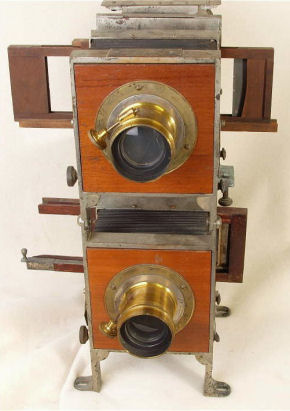 |
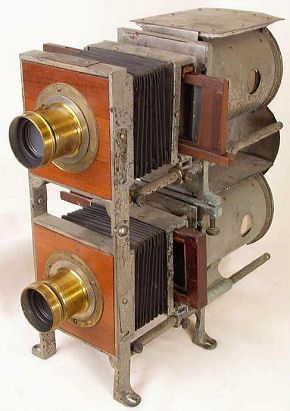 |
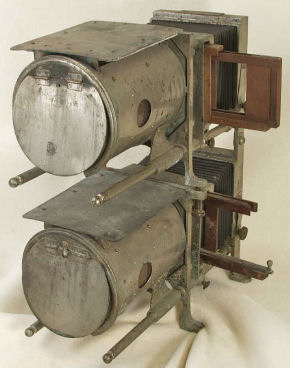 A.T.Thompson & Co. |
|
Brass label states: 'A.T.Thompson & Co. 26
Bromeire St Boston. Pat date Feb 10,91'. Measures 16” tall x 18” long x
5-3/4” wide. |
||
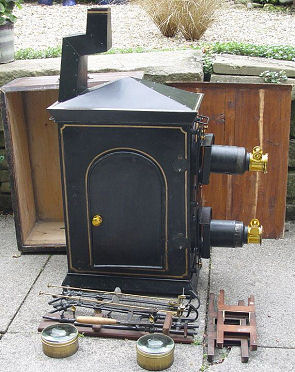 This is a very unusual and well-considered built metal biunial. It has no name of the maker on it. There is included a pair of Beard patent slide changers in mahogany and brass. |
 |
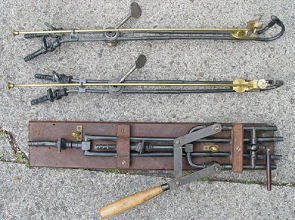 The  two
limelight illuminants are very unusual in their length and obviously
made to fit lanterns of this dimension only. The matching flow control
mechanism is mounted on a mahogany plank which can be screwed to the end
of the box, with the lantern placed on top. two
limelight illuminants are very unusual in their length and obviously
made to fit lanterns of this dimension only. The matching flow control
mechanism is mounted on a mahogany plank which can be screwed to the end
of the box, with the lantern placed on top. |
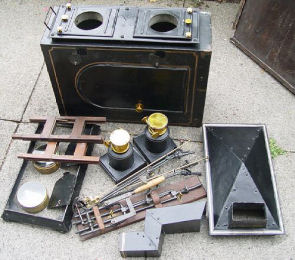 The whole apparatus takes apart easily and, including the fittings, packs away in the body...... |
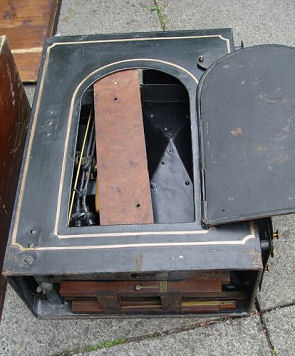 |
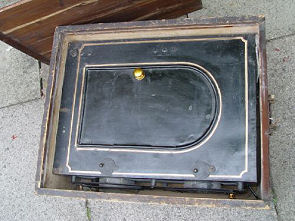 ......and fits snugly into its strong pine box, which has an iron carrying handle at each end. |
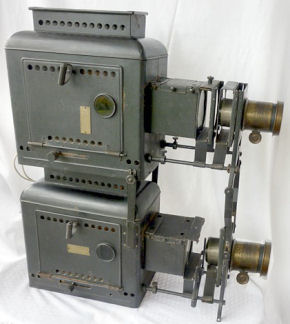 |
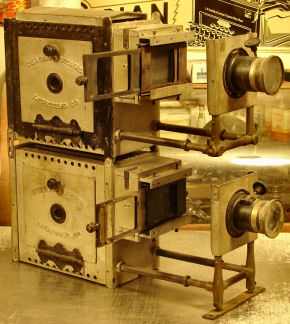 |
 |
| The plate on this vertical biunial magic lantern reads, "Bausch & Lomb Optical Co. Rochester, N. Y. U. S. A. Model C "Balopticon"....Pat. 1911." |
Antique biunial magic lantern slide projector made
by the Chicago Stage Lighting Co. This is a heavy duty professional unit
for use in a movie theatre. The projector measures 24'' x 22'' x 6.5'' |
|
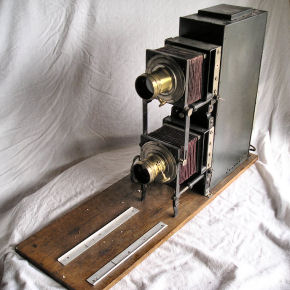 |
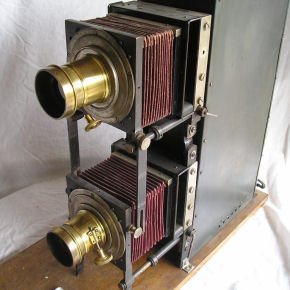 |
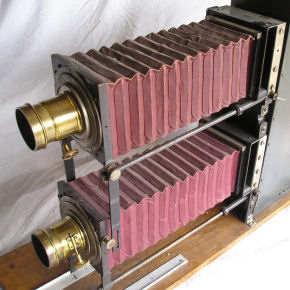 |
| A biunial magic lantern made by the Douglass Light Company of Seattle. Douglass Light Company made all the metal parts for their lanterns, while buying the lenses from Bausch & Lomb in Rochester. They also brought in some slide images from suppliers, but others they photographed themselves. Developing and mounting was all done in-house, and the black and white images were hand-coloured by the only non-family member in the business, Lydia Rauch Young. Slides were sold or rented (at $1 to $1.50 for two weeks) for use in churches, clubs, schools and homes. Some slides were specially commissioned, such as merchants' promotions and political messages. | ||
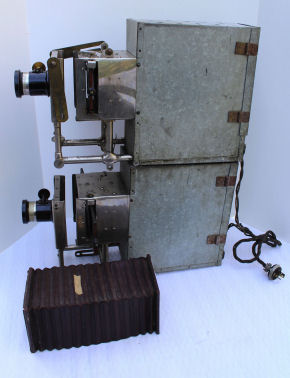 |
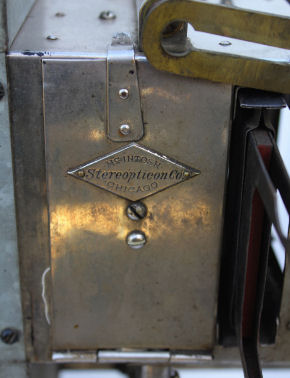 |
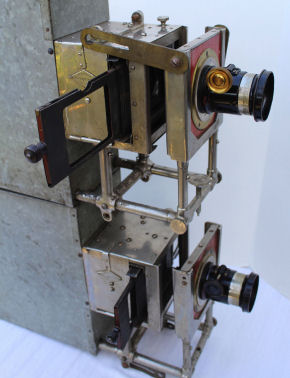 |
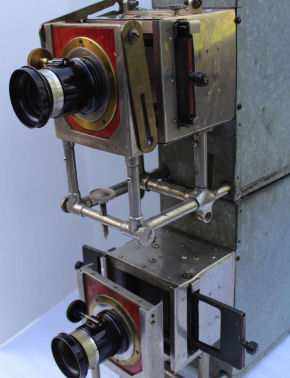 |
Metal Biunial made by McIntosh Stereopticon Co Chicago. The two bellows
are not mounted. |
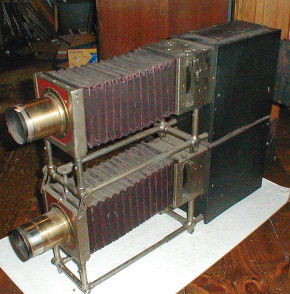 This is the same design with mounted bellows. |
 |
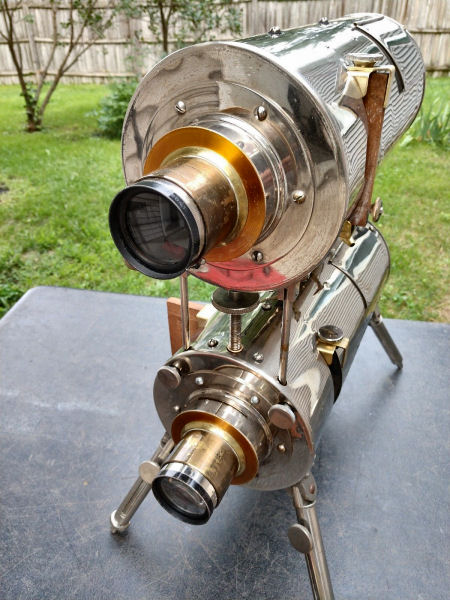 Nickel-plated magic lantern made by the Macintosh Battery & Optical Company, Chicago, USA. Size: 48 cm tall and 58 cm with the legs, 43 cm deep. Two little blue round windows indicate the flame inside. |
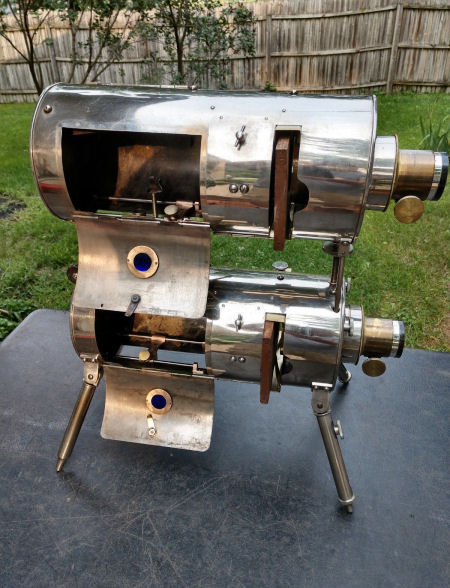 |
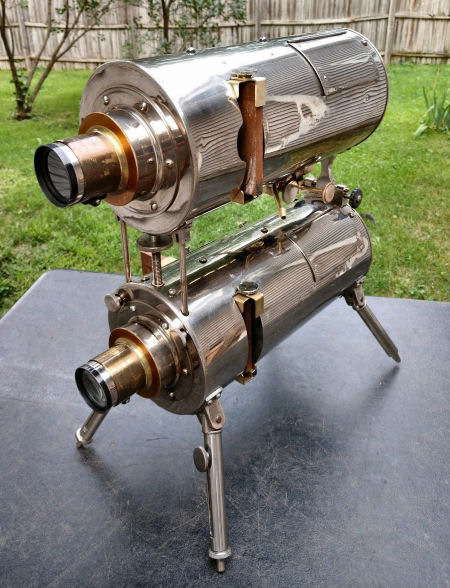 |
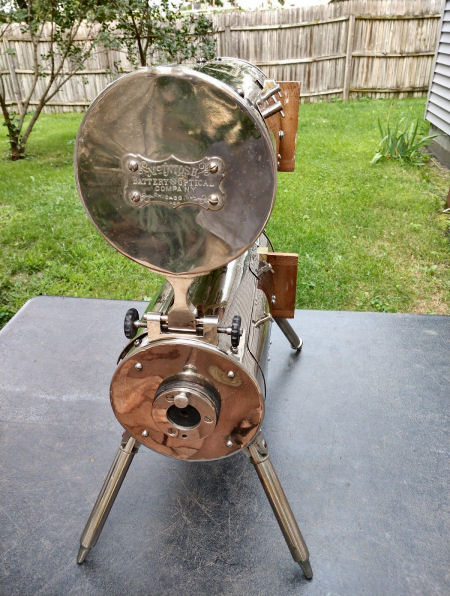 |
 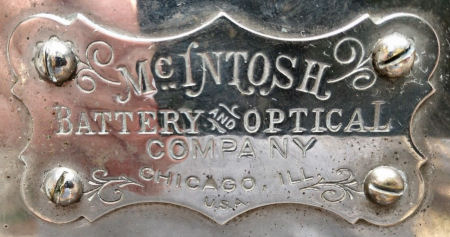 |
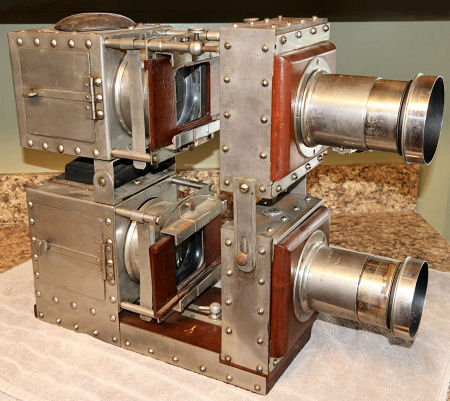 |
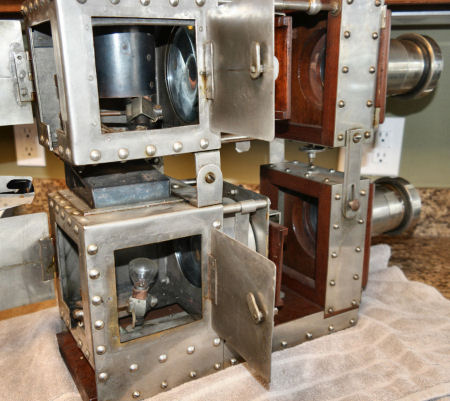 |
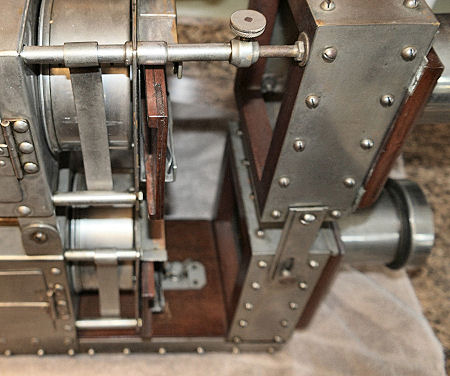 |
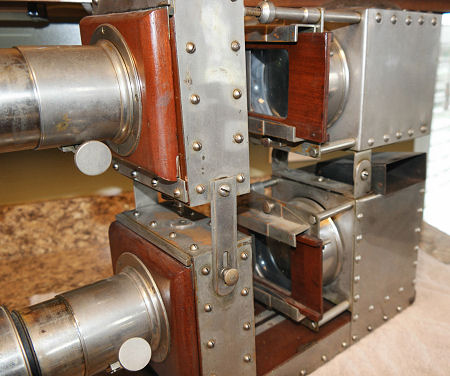 |
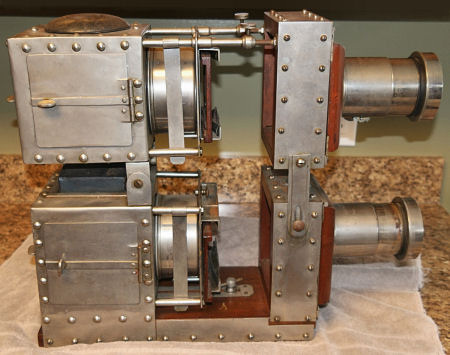 |
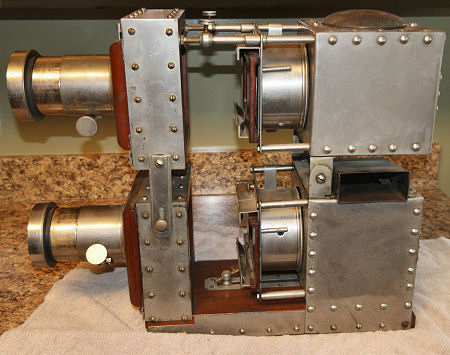 |
| McAllister riveted nickel bi-unial. | |
 |
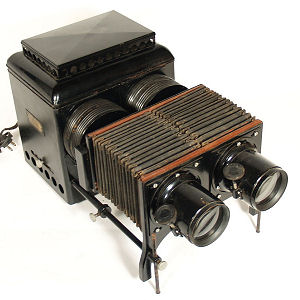 |
|
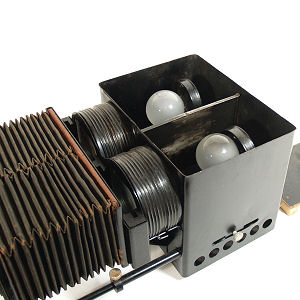 |
||
|
Bausch & Lomb Balopticon BBM
Dissolving Projector. This is a heavy, commercial quality magic lantern,
with dual lenses and dual bellows, angled so that their projected images
overlap. It was sold for $125 when it was new in 1911 (roughly $2200 when adjusted for inflation) and was the first lantern
that allowed projectionists to create a smooth,
synchronized fade-in and fade-out effect with their glass slides and a
single projector, allowing one image to gradually dissolve into another. The desired effect was achieved
electro-mechanically. The lantern's control board featured a pair of rheostats that raised the voltage on one lantern as it lowered the
voltage on another. Measures approx. 16" x 10" x 10" (40,5 x 25,5 x 25,5 cm) when the bellows are fully retracted. |
||
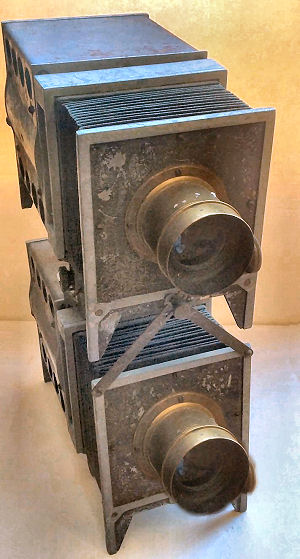 |
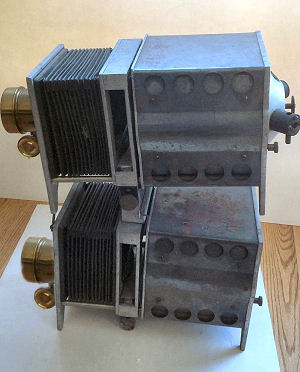 |
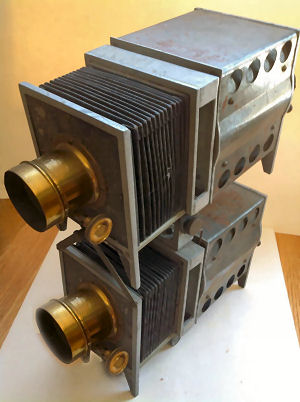 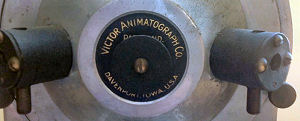 |
|
Victor Animatograph biunial. The lantern is 17" tall x 11" deep x 6" wide (c. 43 x 28 x 15 cm). It is marked at the back: Victor Animatographic Co Pat Pend Davenport Iowa USA. |
||
| Another way to take advantage of the possibilities offered by a biunial, such as creating dissolving views, is to use two identical magic lanterns placed side by side. | |
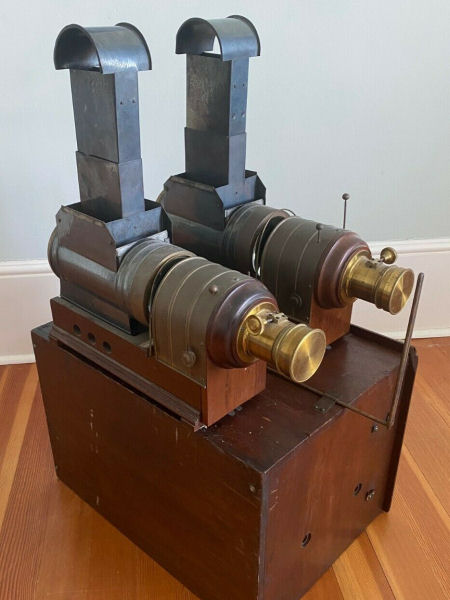 |
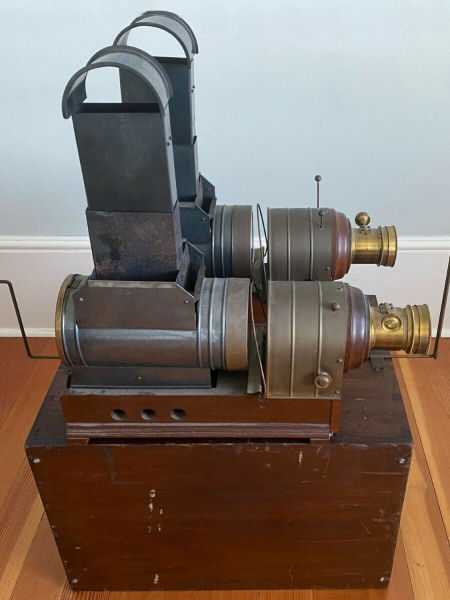 |
 Here
are two magic lanterns from the American manufacturer Lorenzo J. Marcy
placed on top of the wooden case in which they also could be
transported. The lenses are from Darlot Paris, B.F. & Co. On the
kerosene lamps is a messing plate with the text: L.J. Marcy Patented,
April 28, August 11, 1866, July 6, 1869. A shutter can be attached to
the metal rod between the lanterns to cover the two lenses alternately. Here
are two magic lanterns from the American manufacturer Lorenzo J. Marcy
placed on top of the wooden case in which they also could be
transported. The lenses are from Darlot Paris, B.F. & Co. On the
kerosene lamps is a messing plate with the text: L.J. Marcy Patented,
April 28, August 11, 1866, July 6, 1869. A shutter can be attached to
the metal rod between the lanterns to cover the two lenses alternately. |
|
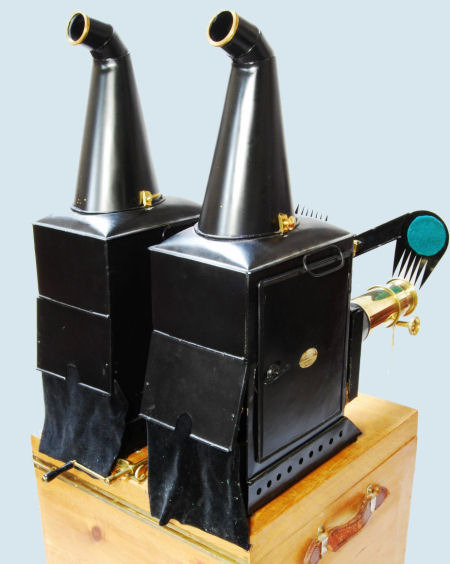 |
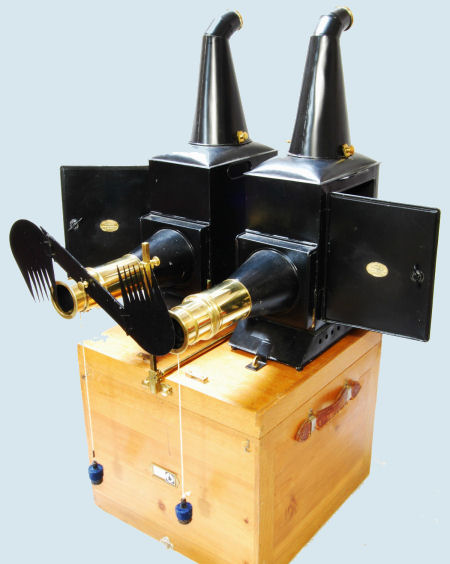 |
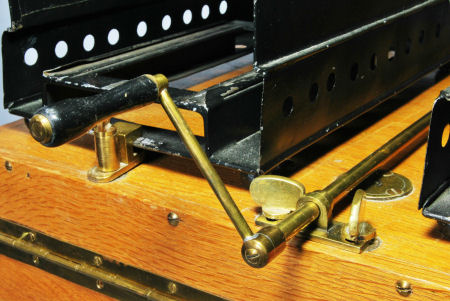 |
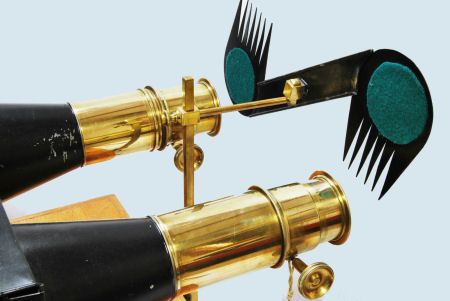 |
|
Here is a pair of magic lanterns from the English
manufacturer Newton & Co. used for this
purpose. They were clearly made especially for this purpose, as they are
built opposite to each other (eg the opening doors each on a opposing
side). They too could be mounted on top of the wooden case in which they
were transported. Here you can see how the shutters that alternately
cover the lenses were operated by a crank on the back. The lanterns are
60 cm long and 69 cm high. When they are mounted on the case, the height
is 115 cm. |
|
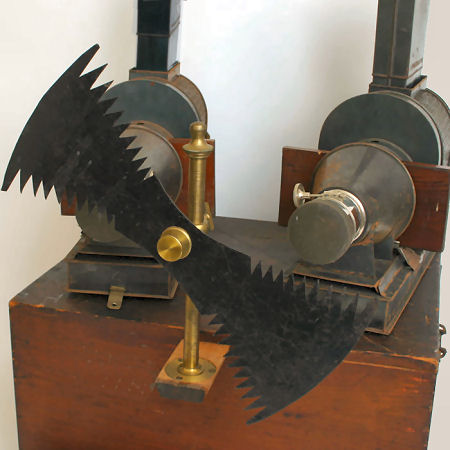 |
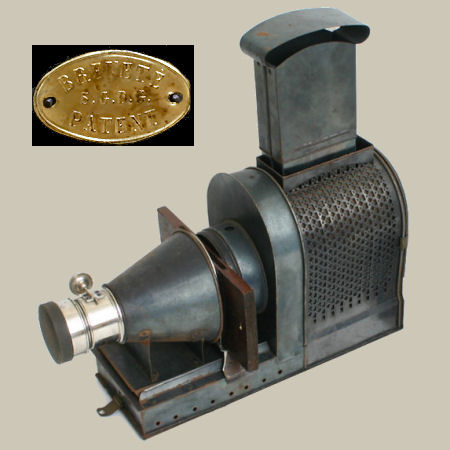 |
| Finally a third example of two paired magic lanterns. The tinplate lanterns are made by Brevette and use a 3 wick burner. The lanterns stand on the top of the pine case and are fixed into position with two brass screws. The height of the toothed dissolver shutter on the brass pillar can be adjusted as can its distance from the lantern lenses. | |
| |
©1997-2021 'de Luikerwaal' All rights reserved. Last update: 03-07-2021. |
|